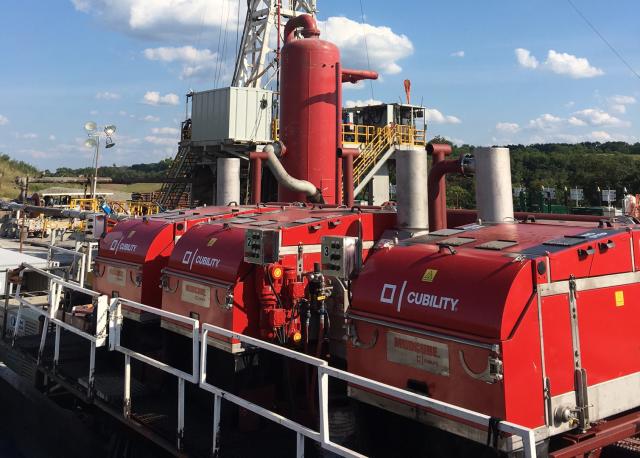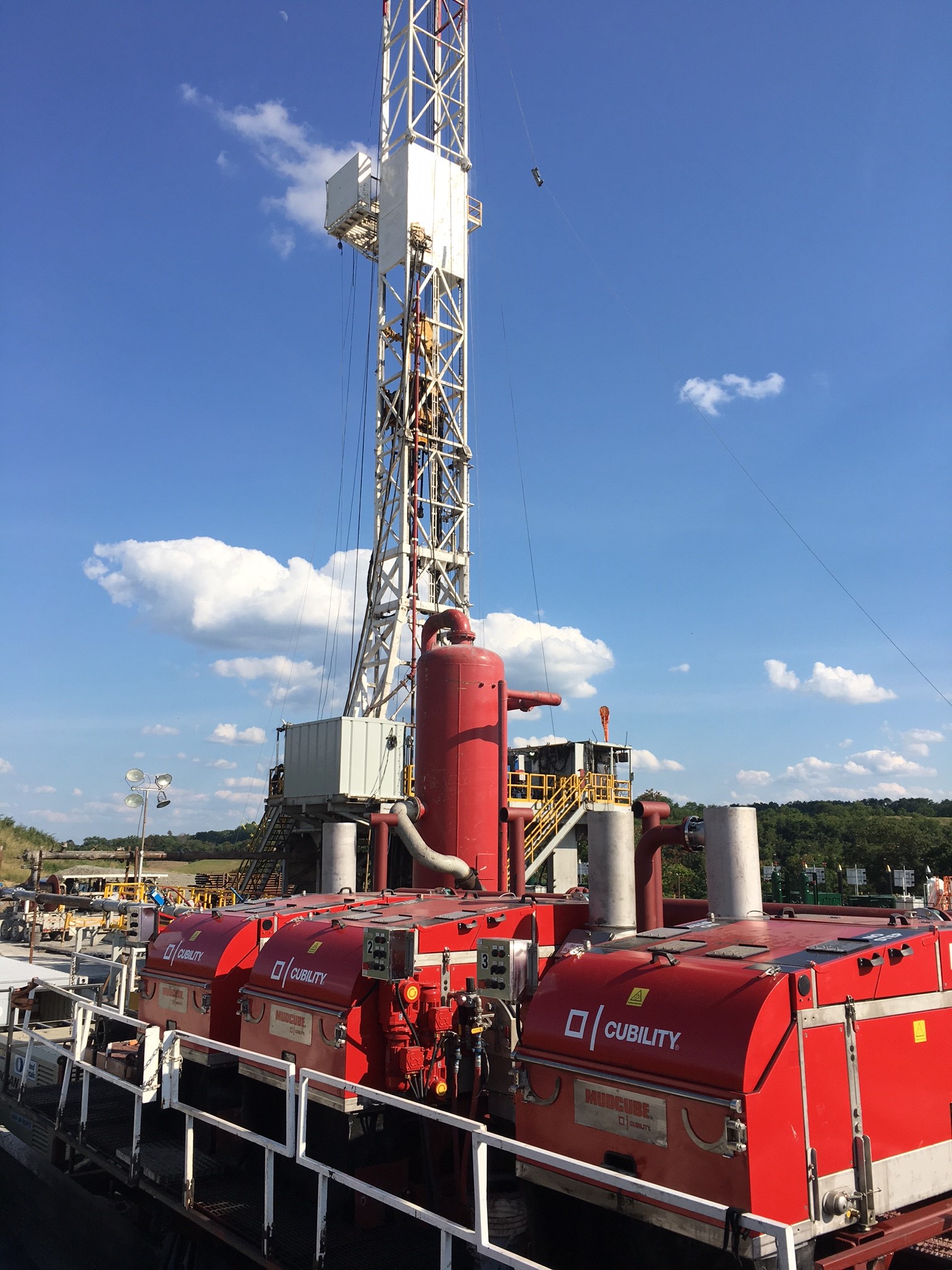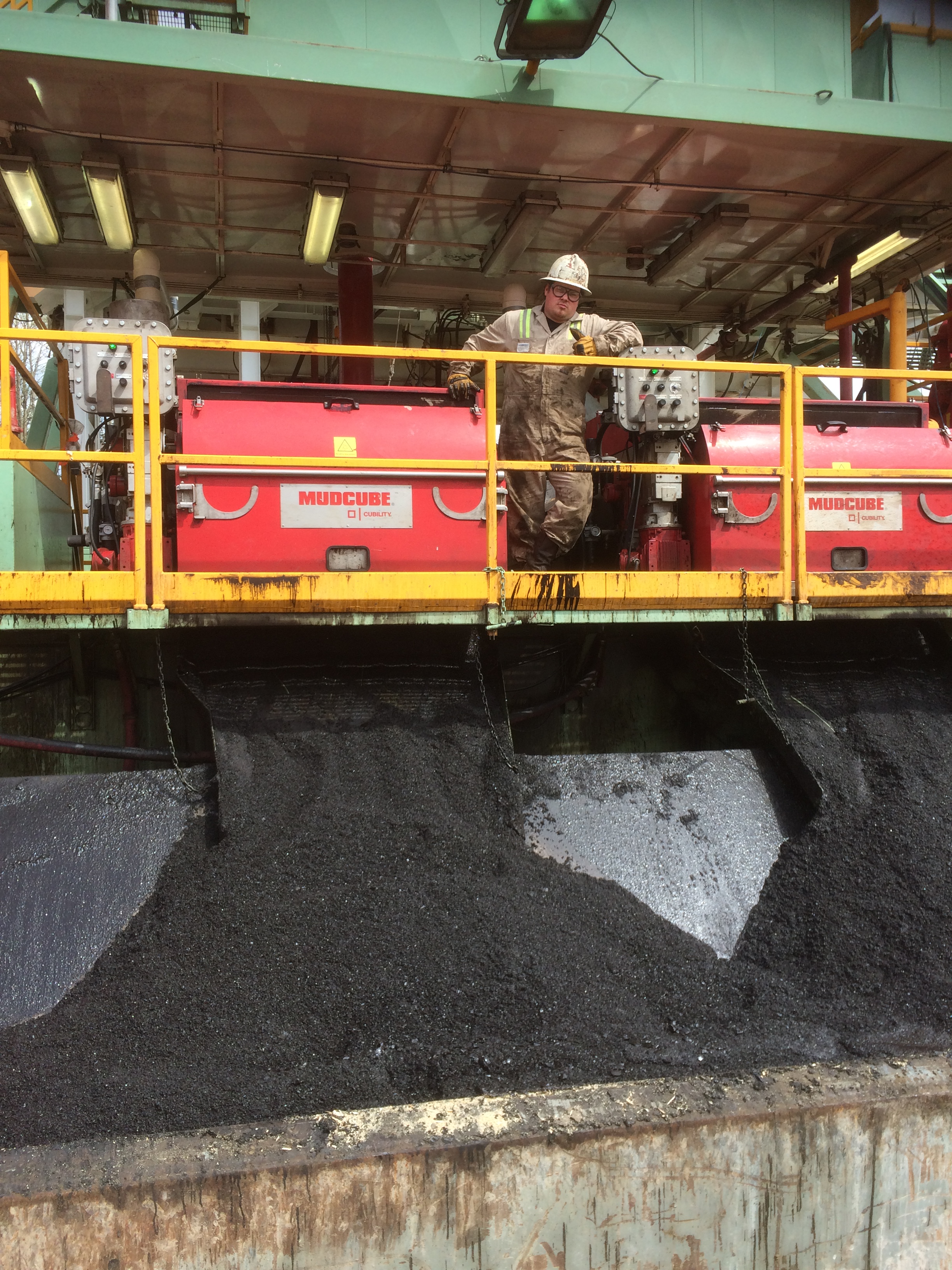
Cubility partnered with EQT Corp., and the MudCubes were successfully deployed on a rig drilling wells in the Marcellus Shale. (Source: Cubility)
While the last year has seen a ramping up of onshore drilling in shale fields across North America, it’s clear that “caution” still remains the watchword when it comes to drilling and production budgets.
Anadarko, ConocoPhillips and Hess already have announced reductions in 2017 E&P budgets, and in the words of Anadarko CEO R.A. Walker, “We sincerely believe the volatility of the current operating market requires financial discipline.”
Such volatility and the focus from shale operators and drilling contractors on financial discipline, reduced costs and increased efficiencies is shining the spotlight on a key sector of the drilling market—solids control.
Drilling fluids play a crucial role in drilling activity in shale fields, cooling and lubricating drillbits, carrying drill cuttings to the surface, controlling pressure at the bottom of the well and ensuring that the formation retains the properties defined for that well.
The effectiveness of such fluids is highly dependent on solids control and the ability to separate the mud from rock particles and low-gravity solids so that clean mud is recycled and circulated back into the drilling system. If there are too many solids in the mud, ROP is reduced, and torque, drag and abrasion are increased as well as potential lost circulation and production.
The more capable the drilling rigs and the better the solids control technologies, the greater the drilling efficiencies and levels of potential production.
Current technology limitations
Shale shakers separate drill cuttings by passing the muds through a shale screen with separation achieved by vibrations and high G-forces. But there are limitations to these devices.
First, there is the capex and opex required for the shale shakers—not a one-off cost but a drag on finances throughout operations due to the need for the shale screens to be continually replaced.
There also is more onsite equipment, personnel, and greater costs and HSE risk.
Also, there are the inefficiencies of the shale shaker-based process itself.
The drilled solids are often broken down into fine particles that are difficult to remove, leading to an increase in solids in the drilling fluid, a decline in drilling fluid efficiency and a negative impact on penetration rates and equivalent circulating density.
Another downside of vibrating-type shale shakers is higher volumes of mud being lost and more drilling waste generated. One industry guru working for a major operator once said that 15% of all the mud used per well is lost in some form or another via the shakers.
 Viable alternative
Viable alternative
It’s with these issues in mind that Cubility’s filter beltbased MudCube technology is proving an effective alternative to shale shakers in shale fields.
The MudCube is an enclosed vacuum-based system that eliminates the traditional process of shaking fl uid and solids. Instead, drilling fl uids are vacuumed through a rotating filter belt that uses high airfl ow to separate the cuttings from the fl uid.
The cleaned drilling fl uids are then returned to the active mud system, and the drilled solids are carried forward on the filter belt for disposal. As opposed to shakers, the MudCube processes 100% of the mud, immediately increasing performance.
The system also eliminates the need for multiple shaker panels, with the solids removal efficiency also ensuring that as much as 80% more mud is recovered than competing technologies, which is a huge benefit when multiplied by several onshore rigs.
The improved separation capabilities of the MudCube also lead to better quality drilling fl uid, more drilling fl uid recycled back to the mud tanks to be reused for drilling, less waste and improved drilling efficiencies with stable drilling fl uid properties and a decrease in nonproductive time.
There are also the financial benefits of avoiding screen replacements on a regular basis—filter belts need replacing but not at such fast rates.
In addition, the MudCube is a much more compact alternative to shale shakers. A typical three-deck shaker weighs about 3 metric tons compared to 1 ton for the MudCube.
Deployments across North America
The MudCube’s easy installation on drilling pads is ensuring that it can impact the bottom line almost immediately.
In 2016 Cubility partnered with EQT Corp., and the MudCubes were successfully deployed to an onshore fl uid rig that was drilling Marcellus wells in western Pennsylvania. Cuttings were easily lifted out of the wellbore, leading to immediately improved solids control and waste disposal.
The MudCube also has been successfully deployed for Murphy Oil in Canada, and the company is evaluating the service for possible use in the Eagle Ford Shale as well.

New Tech Solids Inc. and the MudCube delivered dry cuttings with Murphy Oil in Canada. (Source: Cubility)
Mending the broken value chain
Cubility also is looking to contractor partnerships and offering the MudCube as a rentable system to enable contractors to embrace the latest solids control innovations and address the broken value chain where operators drive down day rates, leaving contractors with little scope for new equipment.
To this end Cubility is partnering with Houston-based Stage 3 Separation in providing a modular, easy and inexpensive installation and operation of MudCube, a system specifically designed for onshore shale operations and that can be up and running in a matter of days as an integrated part of the rig design.
It’s through exclusive distribution partnerships such as this and also with Canadian-based New Tech Solids Inc. (a recent deployment is taking place with Shell via New Tech Solids) that the next few years is likely to see more and more MudCubes deployed across North American shale fields through these service providers.
In today’s tight but ultrafast land drilling market, any solids control solution must provide immediate “wins” in terms of reduced costs and increased efficiencies. Vacuum and filter belt-based enclosed solid control systems are achieving this.
Have a story idea for Shale Solutions? This feature highlights technologies and techniques that are helping shale players overcome their operating challenges. Submit your story ideas to Group Managing Editor Jo Ann Davy at jdavy@hartenergy.com.
Recommended Reading
Wolf in Sheep's Clothing: Cryptocurrency's Effect on Energy, Society
2024-01-24 - Cryptocurrency miners and their ravenous appetite for electricity are creating widespread problems for electricity grids that are already short of capacity.
Green Swan Seeks US Financing for Global Decarbonization Projects
2024-02-21 - Green Swan, an investment platform seeking to provide capital to countries signed on to the Paris Agreement, is courting U.S. investors to fund decarbonization projects in countries including Iran and Venezuela, its executives told Hart Energy.
Patterson-UTI Braces for Activity ‘Pause’ After E&P Consolidations
2024-02-19 - Patterson-UTI saw net income rebound from 2022 and CEO Andy Hendricks says the company is well positioned following a wave of E&P consolidations that may slow activity.
E&P Earnings Season Proves Up Stronger Efficiencies, Profits
2024-04-04 - The 2024 outlook for E&Ps largely surprises to the upside with conservative budgets and steady volumes.
Buffett: ‘No Interest’ in Occidental Takeover, Praises 'Hallelujah!' Shale
2024-02-27 - Berkshire Hathaway’s Warren Buffett added that the U.S. electric power situation is “ominous.”





